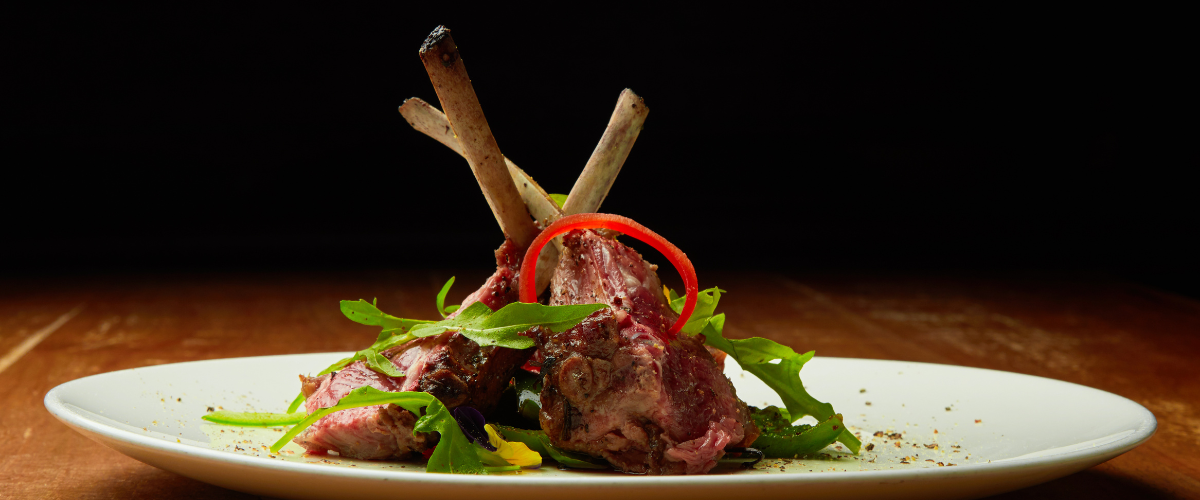Traditional Easter Meals and the Wines That Pair with Them

Wine pairings for lamb, ham, and fish.
By Erin Henderson
I celebrate Easter.
Not in the traditional Christian observance; in the general, secular vagaries of a long weekend: the Easter bunny, an indulgent meal, and some good chocolate.
However, when researching ideas for an article on pairing wine with Easter dinner, I got curious about the culinary traditions that surround this holiday.
Of course, just like any religious feast, foods eaten are symbolic of the day. According to The Lutheran Witness, Easter dinner is the richest holiday in the Christian faith with almost everything on a traditional table representative of Jesus Christ, His sacrifice, resurrection, and new life.

Eggs
The Jerusalem Post writes that eggs denote the circle of life and are very popular to serve during both Christian and Jewish festivals. With meaning steeped in resurrection and rebirth, this is why and how the Easter egg came to be: for centuries eggs have been hard boiled and died bright colours for the festive occasion. Later, in the 19th century, chocolate eggs appeared as an extra special treat after the restrictive, 40-day lent.
Additionally, observant households may choose to bake hardboiled eggs into bread or serve various types of eggs as appetizers before the big meal.
Wine Pairing:
A brut sparkling wine is a delicious and elegant choice for egg dishes like devilled eggs and quiche.

Lamb
The Jerusalem Post also writes that the traditional Easter lamb, which is mentioned many times in the Bible throughout various Books, is actually based on the Passover tradition of the only meat on the Seder plate.
Roast lamb, whether eaten for the symbolism or simply the tradition, is arguably the top choice for Easter dinner. Of course, there are many, many recipes, but rubbed with a mixture of garlic and rosemary, and served rare, is a common preparation.
Wine Pairing
There’s a lot of flexibility here. Pinot Noir and Chianti Classico are popular pairings, and I like Syrah from the Northern Rhône for its peppery spice and smoky notes to compliment the game flavours of the lamb and resinous edge of the rosemary.
You may also like: Pair Wine Like You Would a Sauce
Ham
In North America, ham took over as the Easter dinner of choice centuries ago. According to food historian, Bruce Kraig, ham offered practicality as well as preference: pigs were slaughtered in the fall and cured all winter to be ready for spring. The pigs were ready before fresh crops grew and new animals were able to be harvested. As years went on, ham became the far more affordable option, costing only 62 cents per pound in 1950 versus 74 cents per pound for lamb.
Wine pairing:
A traditional roast ham is both salty and sweet, so dry, or even off-dry, Riesling works well.
Fish
Catholics are forbidden from eating meat on Fridays during Lent, which includes Good Friday. The Marine Stewardship Council suggests this is because Jesus sacrificed His flesh on Good Friday, and since fish is seen as a different form of meat, it is acceptable to eat. Additionally, ancient Christians used to identify each other with a fish symbol, which is why it is still used today.
While crustaceans are allowed by the papacy, it's most traditional to eat fish with scales.
Because anything and everything from the sea is technically acceptable in the eyes of the Church, it’s tough to find “the” Easter fish recipe that really encapsulates all menus. A quick search for Good Friday recipes range from the slightly irreverant mahi-mahi tacos, to the seemingly more somber smoked haddock.
Salmon seems to be a popular option amongst any and all food sites. Recipes abound for everything from a quick tray bake, to a creamy chowder and the ever-popular smoked salmon for your brunch bagels, or part of appetizers for dinner.
Wine pairing:
For a simple baked salmon with lemon and pepper, keep your wine pairing simple. I like a Chablis, or unoaked Chardonnay. The acidity matches the bright lemon, while the mid-weight, silky texture of the wine pairs with the bite of the fish.


